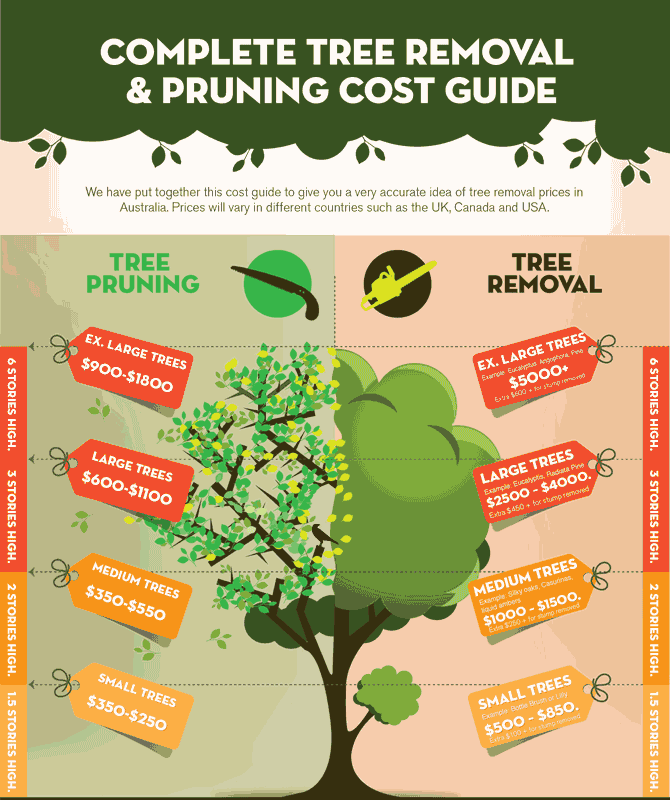Seasonal Tree Treatment: How To Handle Trees Prior To And After Elimination
Seasonal Tree Treatment: How To Handle Trees Prior To And After Elimination
Blog Article
Produced By-
When it comes to seasonal tree treatment, guaranteeing correct management prior to and after removal can dramatically influence the health and appearances of your landscape. By understanding the essential actions associated with assessing tree wellness and preparing for elimination, you can proactively protect your building. But what about the essential methods to comply with once the tree is gone? Stay tuned to uncover the essential post-removal care measures that will assist you grow a growing and sustainable setting for your trees.
Pre-Removal Tree Care
Before addressing the removal of a tree, it's vital to focus on pre-removal tree treatment. Beginning by assessing the tree's wellness and architectural honesty. money landscape for indicators of condition, bug invasions, or any structural problems that may present a security danger throughout elimination. It's important to speak with a licensed arborist to figure out the best strategy.
Pruning dead or unhealthy branches can avoid further damage to the tree and ensure a smoother removal process.
Furthermore, take into consideration the environmental impact of eliminating the tree. Trees play an essential duty in our ecological community, so growing a new tree in an appropriate place can assist balance out any type of loss. Ensure that you have the required permits and approvals for tree removal, especially if the tree is safeguarded by local guidelines.
Seasonal Upkeep Tips
Analyzing your tree's requirements throughout the year is important for its health and durability. To keep your trees in top condition, comply with these seasonal upkeep pointers.
In spring, concentrate on pruning to eliminate dead or broken branches and encourage new development.
Summer requires normal watering, particularly during droughts, to guarantee your tree stays hydrated.
As loss methods, watch out for early indications of illness or anxiety, and take into consideration using mulch to secure the roots throughout wintertime.
In winter, be cautious when eliminating snow from branches to avoid damage, and remain to check your tree's general health and wellness.
Bear in mind to readjust your treatment routine based upon the certain needs of your tree species and local climate. By staying conscientious and aggressive throughout the seasons, you can help your trees prosper and prosper for several years to come.
Post-Removal Tree Care
To guarantee the health of your landscape even after tree removal, proper post-removal treatment is vital. After a tree is gotten rid of, it's crucial to fill up the continuing to be opening with topsoil and portable it to stop settling. https://screenrant.com/animal-crossing-new-horizons-cool-island-ideas-inspiration/ will certainly aid preserve the honesty of the ground and prevent prospective threats in the future.
Consider planting new plant life in place of the eliminated tree to restore the equilibrium and visual appeals of your landscape. On a regular basis water the area to promote the development of new plants and prevent soil erosion.
Evaluate the bordering trees for any signs of condition or anxiety that may have been triggered by the eliminated tree. Watch out for parasites that could've been attracted to the previous tree and take safety nets to safeguard the continuing to be plant life.
If required, talk to a specialist arborist to evaluate the effect of the removal on the surrounding trees and identify any kind of added treatment needed. By complying with these post-removal care steps, you can make certain the continued wellness and appeal of your landscape.
Conclusion
In conclusion, aggressive seasonal tree care is essential for keeping the health and equilibrium of your landscape. By evaluating tree wellness, trimming, and seeking advice from an arborist before removal, you can guarantee a risk-free procedure. After removal, filling the hole, growing new plants, and normal watering will advertise brand-new growth and avoid erosion. Keep in mind to examine surrounding trees for illness and look for more treatment actions from an arborist to keep your landscape thriving.
